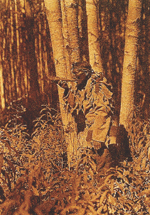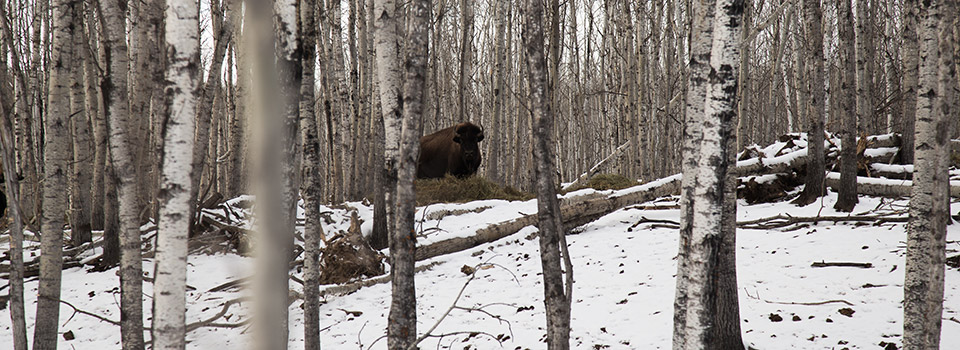Beaver Lake Cree History
The Cree are one of the largest tribes in Canada. Their territory covers a vast area of Western Canada from the Hudson-James Bay region to the foot of the Rocky Mountains, and in Alberta between the North banks of the North Saskatchewan River to Fort Chipewyan. This includes the Beaver, Athabasca and peace Rivers basins. It is noted in the Department of Indian Affairs Annual Reports that Pee-ay-sis of the Lac La Biche Band as far north as Great Slave Lake.
The Cree were referred to by early explorers and fur traders as Kristineaux, Kinisteneaux, Kiliston, Kree, Cris, and various other names such as the Nahathaway. Alexander Mackanzie who traveled from Montreal to the Arctic Ocean via the Methy Portage provided a detailed account of the Kinisteneaus (Cree) in 1789. During his stay at Red Deers Lake (Lac La Biche) during the winter of 1789-99, David Thompson noted in his Daily Journal that he met and traded with the Nahathaway (Cree) from time to time. In Alberta, the Cree are divided into two main groups, the Plains Cree who live on the prairies, and the Wood Cree who live in the boreal or northern forest region.
Beaver Lake Cree Nation is a Wood Cree Band. Missionaries visited the Cree on the South shore of Beaver Lake as early as 1856. No one really knows when the Cree first arrived in the Lac La Biche region. However, it is known that the Cree expanded steadily westward from the Hudson Bay-James Bay country. There is archeological evidence in the form of pre-contact pottery which indicates that the Cree were in this region in the 1500s. A type of early Cree pottery known as learwater Punctate, which is found regularly in the Saskatchewan forests, was also found on Black Fox Island on Lac La Biche, and on the shores of Wappau Lake.
The Cree, who had good relations with the early White Fur traders, served as middlemen between the White fur traders and the interior tribes as exploration advanced westward. Buffalo was the mainstay of the Plains Cree, but Whitefish was the staff of life of the Wood Cree, who mostly resided in areas of high Whitefish availability.
Beaver Lake Cree Nation is located in the Treaty No.6 area. This treaty was first signed at Ft. Carlton on August 23, 1876.


Beaver Lake Cree Nation was a signatory to the adhesion made to Treaty No.6 at Ft. Pitt on September 9, 1876. Chief Pee-Yas-See-Wah-We-Cha-Koot, also known as Pee-ay-sis, or Pee-ay-sees and Councilor, Pay-Pay-See—See-Moo signed on behalf of the Beaver Lake Band No.131. When a number of the members of the Lac La Biche Band were discharged from the Treaty and accepted Scrip, others joined the Beaver Lake Band whose Chief at that time was Rolling Thompson, and subsequently, Kah-qua-num. The numbers involved in these occurrences appear to be uncertain.
Although it was a term of the Treaty that the Dominion Government would set apart for Reserves “farming lands…after consulting with the Indians thereof as to the locality to be most suitable for them,” and that that the surveys required to establish the boundaries of the Reserves would be completed within a reasonable time, the lands for Beaver Lake Indian Reserve No.131 were not set apart until the required Order-in-Council was issued on May 31, 1911.
(Saddle Lake Indian Reserve was established in 1886.) Furthermore, the population of Beaver Lake Cree Nation had declined significantly prior to 1911 as a result of epidemics and other factors. The land entitlement for Beaver Lake Cree Nation was based on the 1908 population of 105. Prior to 1911 some of the Indian Agents made efforts to coerce the members of the Beaver Lake Band to abandon their chosen area for their Reserve on the South shore of Beaver Lake and to move to Saddle Lake. This dubious coercion was steadfastly resisted even though it meant deprivation of food and other assistance promised by the Treaty. Beaver Lake Cree Nation suffered greatly from the serious decline of fish and game in the region during the latter part of the 19th Century.
The Department of Indian Affairs suspended the treaty payment of $5.00 per capita for the entire Band in 1885, 86 and 87 as punishment for the ransacking of the Hudson’s Bay Company’s Post at Lac La Biche at the instigation of Cree War Chief, Wandering Spirit.

Although many members of the Beaver Lake Band converted to Christianity, the oral traditions and oral knowledge passed down from generation to generation since time immemorial were preserved. Elders and tradition keepers of Beaver Lake Cree Nation have faithfully kept stories and legends relating to places, events, spiritual matters, burials, ceremonial areas, communal gathering sites, the location of medicinal plants and berries, as well as other important cultural aspects. The Beaver Lake Indian Reserve is located approximately 17 km. southeast of Lac La Biche and presently encompasses 6145.5 hectares (15,185 acres.) The registered membership as of March 2006 was 870, approximately 325 of whom reside on theReserve.
The principal means of survival, namely, the traditional practices of hunting and fishing are still carried on.
Band members are also actively engaged in farming, ranching, forestry, the oil and gas industry and other trades and occupations. Beaver Lake Cree Nation has taken great strides to improve the quality of life of its members. Among other things, it has its own school system, health and treatment centers, Head Start program and administration.
Beaver Lake Cree Nation also maintains and operates Spruce Point Campground, and hosts an annual Pow Wow. It works in a cooperative manner with other levels of government and industry for the betterment of its members. Beaver Lake Cree Nation has always valued its heritage and traditional culture, which hold the hope and optimism for self determination and a strong and enduring future for today’s people and tomorrow’s generations.





